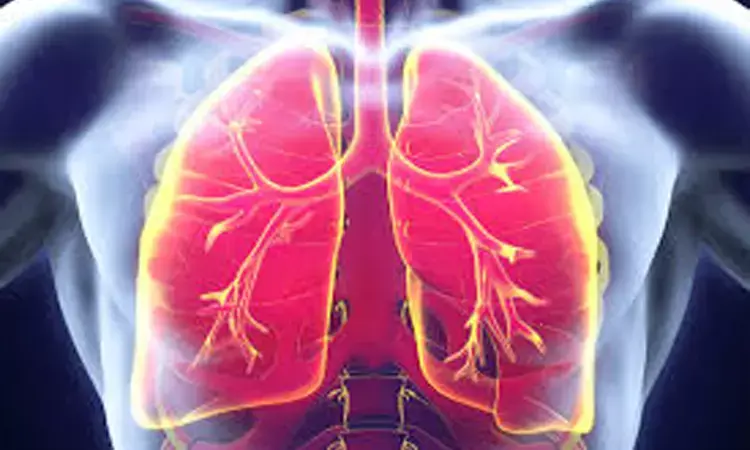- Home
- Medical news & Guidelines
- Anesthesiology
- Cardiology and CTVS
- Critical Care
- Dentistry
- Dermatology
- Diabetes and Endocrinology
- ENT
- Gastroenterology
- Medicine
- Nephrology
- Neurology
- Obstretics-Gynaecology
- Oncology
- Ophthalmology
- Orthopaedics
- Pediatrics-Neonatology
- Psychiatry
- Pulmonology
- Radiology
- Surgery
- Urology
- Laboratory Medicine
- Diet
- Nursing
- Paramedical
- Physiotherapy
- Health news
- Fact Check
- Bone Health Fact Check
- Brain Health Fact Check
- Cancer Related Fact Check
- Child Care Fact Check
- Dental and oral health fact check
- Diabetes and metabolic health fact check
- Diet and Nutrition Fact Check
- Eye and ENT Care Fact Check
- Fitness fact check
- Gut health fact check
- Heart health fact check
- Kidney health fact check
- Medical education fact check
- Men's health fact check
- Respiratory fact check
- Skin and hair care fact check
- Vaccine and Immunization fact check
- Women's health fact check
- AYUSH
- State News
- Andaman and Nicobar Islands
- Andhra Pradesh
- Arunachal Pradesh
- Assam
- Bihar
- Chandigarh
- Chattisgarh
- Dadra and Nagar Haveli
- Daman and Diu
- Delhi
- Goa
- Gujarat
- Haryana
- Himachal Pradesh
- Jammu & Kashmir
- Jharkhand
- Karnataka
- Kerala
- Ladakh
- Lakshadweep
- Madhya Pradesh
- Maharashtra
- Manipur
- Meghalaya
- Mizoram
- Nagaland
- Odisha
- Puducherry
- Punjab
- Rajasthan
- Sikkim
- Tamil Nadu
- Telangana
- Tripura
- Uttar Pradesh
- Uttrakhand
- West Bengal
- Medical Education
- Industry
All high risk surgery patients must be screened early for perioperative pulmonary embolism

A life-threatening disorder, pulmonary embolism requires prompt detection and treatment. Patients who have surgery are five times more likely to suffer a pulmonary embolism than those who do not.
Confusion persists over the diagnosis, management, and follow-up for pulmonary embolisms, which are major causes of mortality globally. Treatment options vary from anticoagulation alone to catheter-directed thrombolysis to embolectomy, and mechanical circulatory support devices. A recently published study aids in the development of an institutional working methodology for the detection and management of pulmonary embolism in high-risk and suspected patients during the perioperative phase.
Cough, hypoxemia, dyspnea, tachycardia, and chest pain are the most common signs and symptoms of PE, and X-ray and echocardiography results are sufficient evidence to raise the possibility of acute pulmonary embolism, which necessitate rapid diagnostics and treatment at the bedside. If the patient is hemodynamically stable, however, CTPA can be performed.
An anticoagulant is required for acute pulmonary embolism in order to avoid early death and repeated symptoms of deadly venous thromboembolic embolism. This is a life-threatening condition. At least three months of anticoagulation is required, and the initial 5–10 days of treatment should include parenteral anticoagulation (unfractionated, low-molecular-weight, or fondaparinux) to treat acute pulmonary embolism (PE).
Supplemental oxygen is indicated in patients with SpaO2 levels less than 90% because hypoxia is a symptom of severe PE, which is caused by an imbalance between ventilation and perfusion. During anaesthetic induction, intubation, and positive-pressure ventilation, patients with right ventricular failure are more vulnerable to the development of severe hypotension. When compared to heparin, thrombolytic treatment reduces overall mortality and pulmonary embolism recurrence, but it increases cerebral bleeding and has little effect in hemodynamically stable patients.
Patients with suspected pulmonary embolism who are hemodynamically deteriorating need rescue thrombolytic therapy; nevertheless, surgical embolectomy and catheter-directed treatment are alternatives to rescue thrombolytic therapy in the management of pulmonary embolism. Intravenous catheter filters reduce the risk of subsequent pulmonary embolism, increase the risk of DVT, and have no effect on overall mortality, so they should only be used in specific situations, such as when antithrombotic therapy is contraindicated or when recurrent pulmonary embolism occurs despite adequate anticoagulation. For DVT prevention, a fixed-dose regimen of rivaroxaban is as effective as conventional anticoagulant medication without the requirement for laboratory testing.
Non-pharmacologic prophylaxis (compression stockings, leg elevation, sequential compression devices (SCDs), ambulation, and the use of a vena cava filter) and pharmacologic intervention (the use of blood-thinning drugs) may both help to avoid deep venous thrombosis (DVT). Unfractionated heparin (UFH) and warfarin are the most often prescribed blood thinners in Ethiopia. The most common side effect of blood thinners is an increased risk of bleeding, and certain individuals are contraindicated for blood thinners due to a higher chance of developing adverse events. In untreated patients, the total death rate is 30%, with around 10% of patients dying within 1 hour after the occurrence. Patients with haemodynamic instability have the greatest fatality rate, which may reach 58 percent.
All perioperative patients, particularly trauma victims, prostate or orthopaedic surgery, malignancy, immobility, and obesity; smokers; and oral contraceptive users, as well as antipsychotic medication users, are at an increased risk of venous thromboembolism and should be treated with extra caution during surgery and anaesthesia.
Reference-
Abate LG, Bayable SD, Fetene MB. Evidence-based perioperative diagnosis and management of pulmonary embolism: A systematic review. Ann Med Surg (Lond). 2022;77(103684):103684. doi:10.1016/j.amsu.2022.10368
MBBS, MD (Anaesthesiology), FNB (Cardiac Anaesthesiology)
Dr Monish Raut is a practicing Cardiac Anesthesiologist. He completed his MBBS at Government Medical College, Nagpur, and pursued his MD in Anesthesiology at BJ Medical College, Pune. Further specializing in Cardiac Anesthesiology, Dr Raut earned his FNB in Cardiac Anesthesiology from Sir Ganga Ram Hospital, Delhi.
Dr Kamal Kant Kohli-MBBS, DTCD- a chest specialist with more than 30 years of practice and a flair for writing clinical articles, Dr Kamal Kant Kohli joined Medical Dialogues as a Chief Editor of Medical News. Besides writing articles, as an editor, he proofreads and verifies all the medical content published on Medical Dialogues including those coming from journals, studies,medical conferences,guidelines etc. Email: drkohli@medicaldialogues.in. Contact no. 011-43720751


